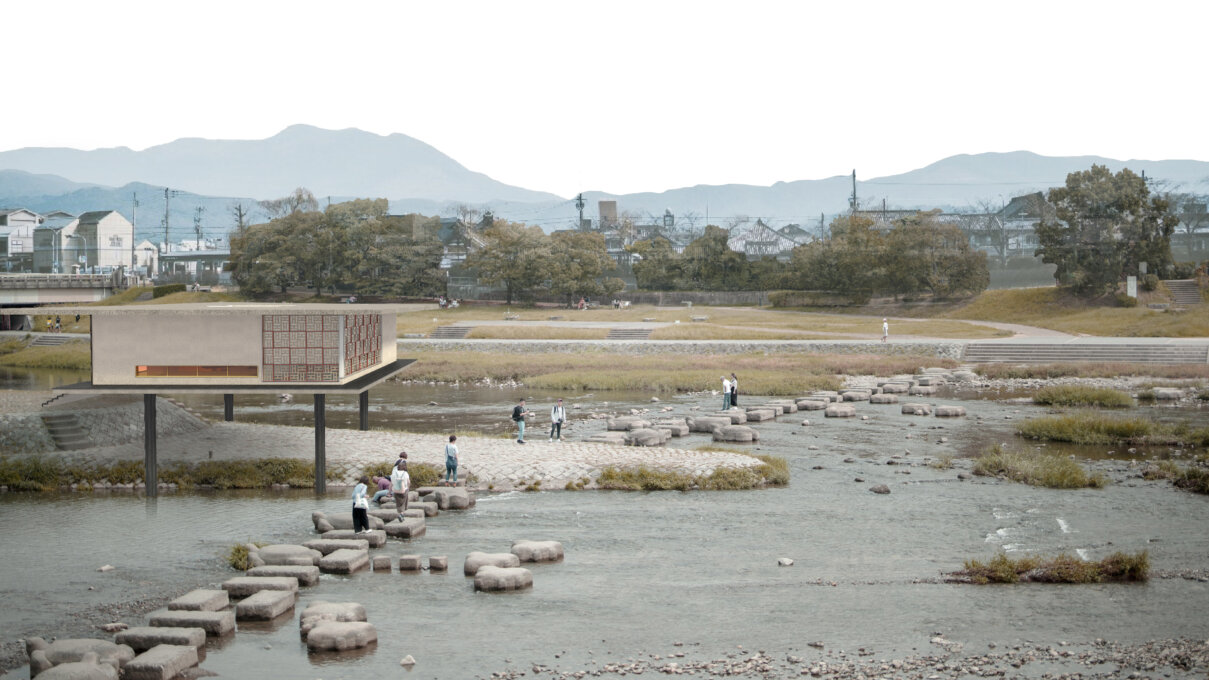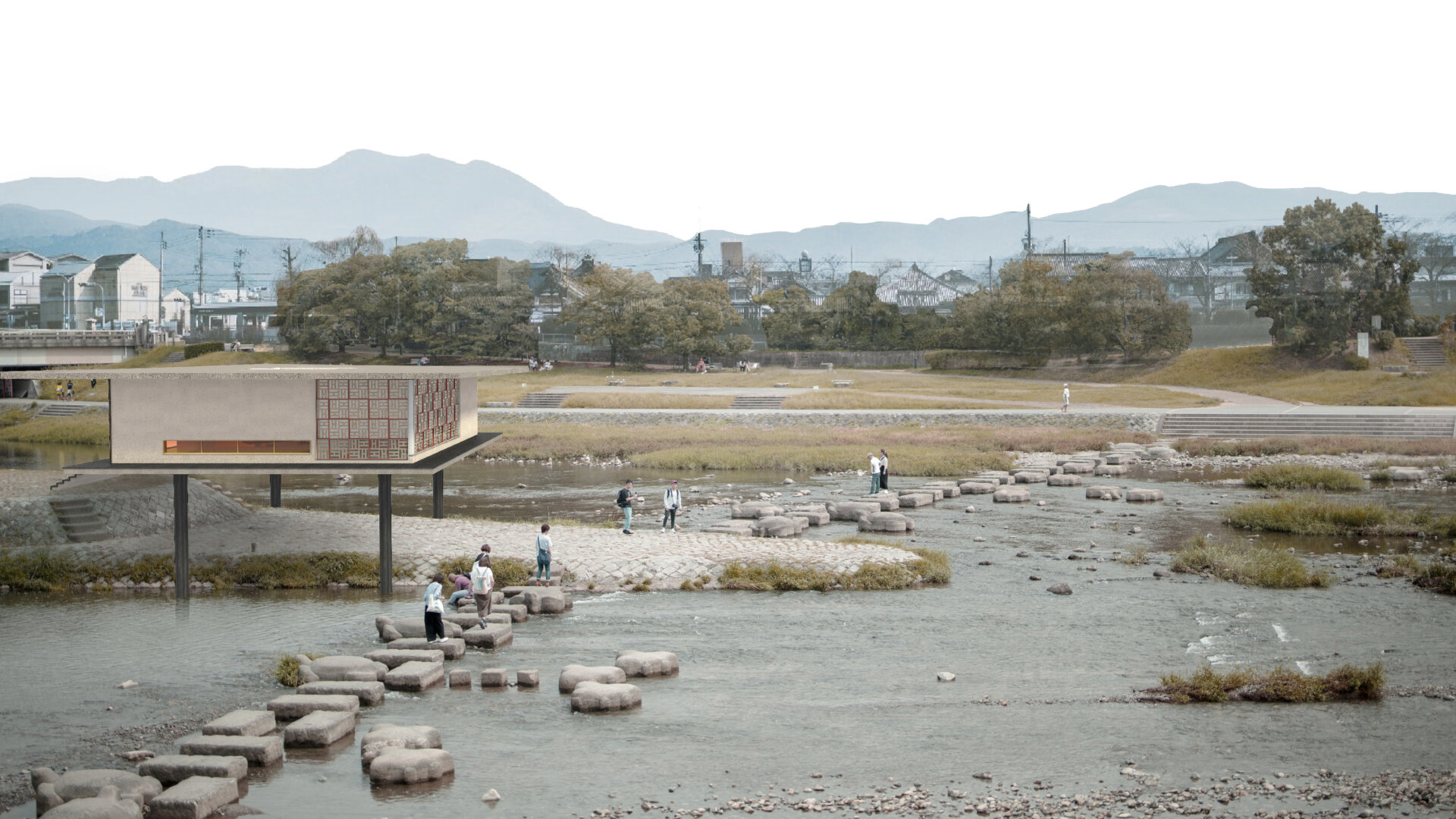





Share to
Project Miyako
By : CHIAYUN LEE
GRANDS PRIX DU DESIGN – 15th edition
Discipline : Student
Categories : Students work / Student - Interior Design
The ancient capital Miyako nowadays known as Kyoto was founded in AD794 when Emperor Kanmu faced life-threatening resentment from his late brother Prince Sawara. As the Emperor was looking for the ideal location of his new capital, the principles from Feng Shui and Onmyodo were greatly taken into consideration. The capital was guarded by four mythological animals in the cardinal directions, east the Azure Dragon, south the Vermilion Bird, west the White Tiger, and north the Black Tortoise. Each guardian corresponds to a type of topography, a color, a natural element, and a season.
Every object, every detail that comes into the views are the results of a series of experiments. The patterns or the directions of flooring and facades all correspond to a piece of city Miyako. Every composition has a philosophy behind it. Every material has a story to tell. It is a continuous space that follows the natural principle and the aging of this ancient city. And with all these pieces of culture, a gentle harmony is created.
The north room stays at dawn time when the darkness still covers the city in shade. The theme Hyakki Yakao, the night parade of 100 ghosts, has been a common belief among people since ancient times. The inner corner window on the north east corner represents the ghost gate of Miyako, where they believe the spirits and non- human creatures could enter the city. Following the hall of dawn, blue light is faintly revealed from the east corridor as the light slowly slides into the darkness.
The east room is the bedroom where one can wake up with the sunlight leaking through the ceiling windows, as Komorebi, the morning scene in the woods. As incense on the shelves brings the smell of woods into the space, the vertical structure of indigo fabric recreates the shadows of woods. The furniture collection of the east room is all composed with flexible sticks as are all the bridges standing on Kamogawa river. The quietness of the first two spaces is the result of experiments of limited light and the usage of colors following the Japanese concept, Yugen, meaning dark, quiet, impermanence of nature trying to reach a state of emptiness.
The south room immediately brings a different level of noise thanks to the amount of light and the color red that represents the Vermilion Bird, the festivals in summer, and element fire. The chosen theme, Empty Cicada, extended by Buddhism meaning the removal of the physical body from the soul, the life that won't be long in the end, just like the empty shell of a cicada. Therefore the granite stone is chosen as the main material of the space, which has the similar feature of thin layers appearing on the surface when an aged stone meets with 2000℃ fire.
The west room recalls the story between the tea master Rikyu and his one time best friend, Toyotomi Hideyoshi, who was the most powerful samurai at the time. Unfortunately, their friendship fell apart as one favored luxury, the other favored simplicity; one collected glory, the other created harmony; one pursued perfection, the other accepted imperfection; one kept collecting and possessing, the other did not hesitate to let go of things.
Collaboration








